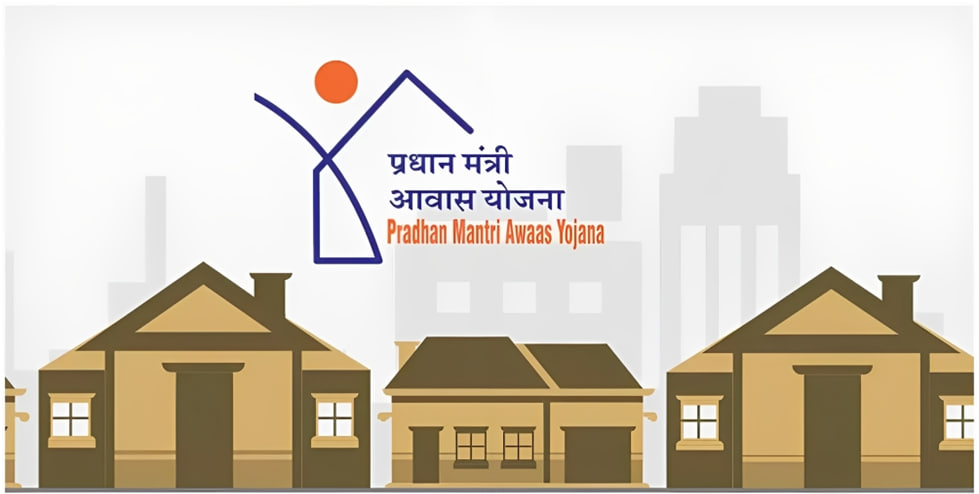Description

Copyright infringement not intended
Context: In a major setback for the rural housing sector, 23 states and union territories have lost 1.44 lakh houses under the Pradhan Mantri Awas Yojana-Gramin (PMAY-G) scheme to Uttar Pradesh, as they failed to meet the deadline for completing the construction of the allotted units.
Details
- According to sources, the Ministry of Rural Development, which is in charge of the PMAY-G scheme, has decided to reassign 1.44 lakh houses under the PMAY-G scheme from 23 states and UTs to Uttar Pradesh, as these states and Union Territories (UTs) could not sanction the houses by the deadline of June 30.
- The PMAY-G scheme aims to build 2.95 crore houses for the rural poor by March 2024, before the next general elections.
- The Ministry of Rural Development, which oversees the scheme, has informed the states and UTs about the revised allocation of houses under the rural housing scheme.
- The states and UTs that have lost their allocation are Gujarat, Tripura, Odisha, Sikkim, Meghalaya, Maharashtra, Assam, Nagaland, Mizoram, Tamil Nadu, Andaman and Nicobar Islands, Arunachal Pradesh, Bihar, West Bengal, Ladakh, Rajasthan, Madhya Pradesh, Kerala, Jharkhand, Punjab, Haryana, Uttarakhand and Andhra Pradesh.
Pradhan Mantri Awas Yojana-Gramin (PMAY-G)
- PMAY-G is a flagship scheme of the central government that aims to provide affordable housing to the rural poor. The scheme was launched in 2016 as a successor to the Indira Awaas Yojana (IAY).
- Under PMAY-G, beneficiaries are identified through the Socio-Economic and Caste Census (SECC) data and are provided assistance of Rs 1.2 lakh in plain areas and Rs 1.3 lakh in hilly areas for constructing a pucca house with basic amenities.
Features
- The scheme is demand-driven and beneficiary-led, meaning that the beneficiaries have a say in the design, location and construction of their house.
- It uses geo-tagging and Aadhaar-linked payments to ensure transparency and accountability in the implementation process.
- It promotes convergence with other schemes such as Swachh Bharat Mission, MGNREGA, Ujjwala Yojana, etc. to provide additional benefits to the beneficiaries.
- It encourages the use of local materials and technologies to reduce the cost and environmental impact of construction.
- It provides technical support and training to the beneficiaries and masons to improve the quality and durability of the houses.

Significances
- It addresses the housing deficit and homelessness among the rural poor, which is a basic human right and a prerequisite for dignity and social inclusion.
- It promotes rural employment and livelihoods by creating demand for local materials and labour in the construction sector.
- It improves the health and hygiene of the rural population by providing sanitation facilities and clean cooking fuel along with the houses.
- It reduces the vulnerability of the rural poor to natural disasters and climate change by ensuring disaster-resilient and energy-efficient houses.
- It contributes to the overall economic growth and social development of the country by reducing poverty and inequality.
Challenges
- Delayed release of funds: The central and state governments often delay the release of funds to the beneficiaries, which affects their ability to start or complete the construction work on time.
- Inadequate verification: The verification of beneficiaries based on the SECC data is often inadequate or faulty, leading to the exclusion of eligible households or the inclusion of ineligible ones.
- Poor quality: The quality of construction is often compromised due to a lack of skilled labour, technical guidance, quality control and supervision.
- Corruption: There are instances of corruption and misappropriation of funds at various levels of implementation, such as diversion of funds, fake beneficiaries, inflated bills and substandard materials.
- Lack of awareness: Many beneficiaries are unaware of their entitlements, rights and responsibilities under the scheme. They also lack information on the design options, construction techniques and maintenance practices.
Possible Steps that can be taken are:
- Streamlining the fund flow mechanism: The central and state governments should ensure the timely and adequate release of funds to the beneficiaries through direct benefit transfer (DBT) or other transparent modes.
- Strengthening the verification process: The verification of beneficiaries should be done through multiple sources such as Aadhaar, bank accounts, gram sabha resolutions and geo-tagging.
- Improving the quality standards: The quality standards should be strictly enforced through regular inspections, audits and feedback mechanisms. The beneficiaries should also be trained and sensitized on quality aspects.
- Curbing corruption: Corruption cases should be promptly investigated and penalized. The grievance redressal mechanism should be made more accessible and responsive.
- Enhancing awareness: The awareness campaigns should be intensified and diversified through various media such as print, electronic, social media and folk art. The beneficiaries should also be involved in participatory planning and monitoring of the scheme.

Conclusion
- PMAY-G is a flagship scheme of the government that reflects its commitment to providing "Housing for All". The scheme not only provides shelter but also dignity and security to the rural poor. The scheme also contributes to the social and economic development of rural areas by creating employment opportunities, enhancing skills, and promoting local entrepreneurship.
Must-Read Articles:
Pradhan Mantri Awas Yojana: https://www.iasgyan.in/daily-current-affairs/pradhan-mantri-awas-yojana-3
|
PRACTICE QUESTION
Q. What are the main objectives and benefits of Pradhan Mantri Awas Yojana (PMAY)? What are the challenges and issues faced in its implementation? How can the scheme be improved and made more inclusive and sustainable?
|
https://indianexpress.com/article/india/deadline-missed-23-states-uts-lose-1-44-lakh-pmay-units-to-up-8844828/






